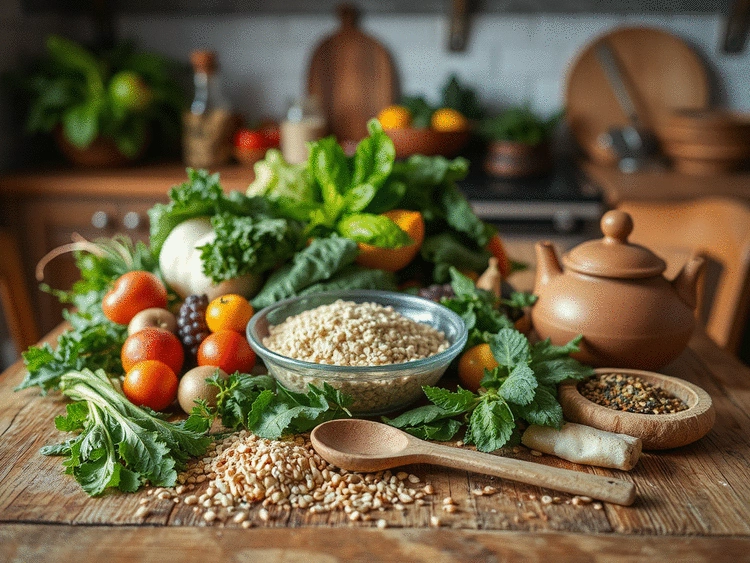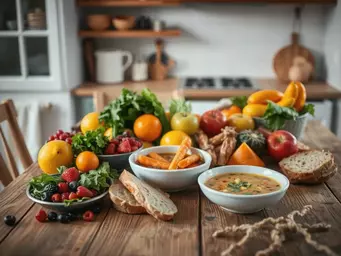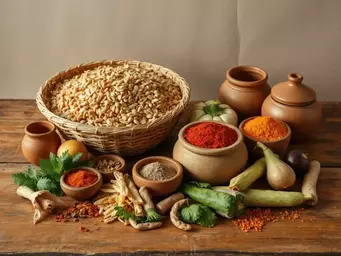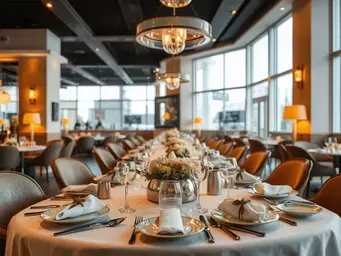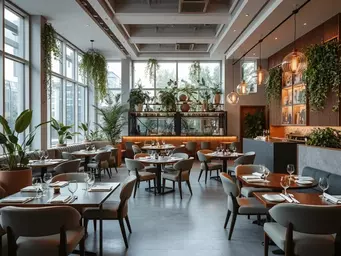Have you ever considered how a single dish can connect you to your heritage and community? Culinary heritage carries the stories of our past, and understanding it helps us appreciate the flavors that define our lives.
What You Will Learn
- Culinary heritage is more than recipes; it embodies cultural significance and personal identity.
- Regional food traditions foster a sense of belonging and enhance cultural exchange.
- Modern challenges like industrialization and fast food threaten traditional cooking practices.
- Integrating modern techniques with traditional recipes can keep culinary heritage alive.
- Technology, such as digital archives, plays a crucial role in preserving culinary traditions.
- The Slow Food movement emphasizes sustainability and local sourcing to honor food traditions.
- Encouraging the next generation of cooks is vital for preserving culinary heritage.
- Culinary tourism offers opportunities to explore and support regional food traditions.
- Engaging in local culinary events and cooking classes fosters community and appreciation for heritage.
Comparing Challenges and Solutions in Culinary Heritage
This visual highlights the key challenges threatening culinary heritage and the modern techniques and movements aiding its preservation and revival. For a deeper dive into the emotional connection we have with food, explore how emotional food memories and eating shape our culinary experiences.
Challenges to Culinary Heritage
- • Industrialization: Homogenization of flavors, reduced uniqueness.
- • Fast Food Culture: Prioritizes convenience over tradition.
- • Skill Loss: Younger generations lack traditional cooking skills.
- • Globalization: Overshadows local food traditions.
Modern Solutions & Movements
- • Technology: Digital archives, AI for forgotten dishes, modern tools.
- • Slow Food Movement: Sustainability, local sourcing, quality focus.
- • Sustainable Practices: Local ingredients, ethical farming, ancient preservation.
- • Culinary Tourism: Food festivals, regional travel, supporting artisans.
Understanding the Importance of Preserving Culinary Heritage
Preserving culinary heritage is not just about holding onto recipes; it’s about embracing the cultural significance and identity that regional cuisines offer. Each dish carries stories of the land, the community, and the traditions that have shaped its preparation and enjoyment over generations. At Born Foodie, I’ve discovered that food connects us to our roots and reminds us of who we are. When we delve into regional food traditions, we tap into a treasure trove of history, flavor, and personal memories.
Think about your favorite dish—what stories does it tell? For many, it's a link to family gatherings, celebrations, and even moments of comfort. This connection to culture is what makes preserving these traditions so vital in our fast-paced world.
Why Regional Food Traditions Matter
Regional food traditions are a reflection of the diverse cultures that inhabit our world. They showcase unique ingredients, cooking methods, and flavors that are often tied to the land and its people. By understanding and celebrating these traditions, we contribute to the preservation of cultural identity. Here are some key reasons why regional food traditions matter:
- Identity and Belonging: They foster a sense of belonging and community.
- Cultural Exchange: They promote cultural exchange and understanding among different groups.
- Flavor Diversity: They enrich our culinary experiences with a variety of flavors and techniques.
- Heritage Preservation: They ensure that culinary knowledge is passed down through generations.
By embracing these traditions, we can deepen our appreciation for the food we consume and the stories they tell.
Challenges to Culinary Heritage in Today's World
Unfortunately, many challenges threaten the preservation of culinary heritage today. Industrialization, fast food culture, and the loss of traditional cooking skills have created a disconnect between people and their food. Here are some of the pressing challenges we face:
- Industrialization: Mass production has led to the homogenization of flavors, reducing regional uniqueness.
- Fast Food Culture: The fast-paced lifestyle often prioritizes convenience over tradition.
- Skill Loss: Younger generations may lack the skills to prepare traditional dishes.
- Globalization: Exposure to global cuisines can overshadow local food traditions.
At Born Foodie, I believe it’s crucial to address these challenges. By raising awareness and encouraging a return to traditional cooking methods, we can begin to revive and celebrate our culinary heritage. For more insights into how chefs are keeping these traditions alive, read about the emotional ties in signature dishes.
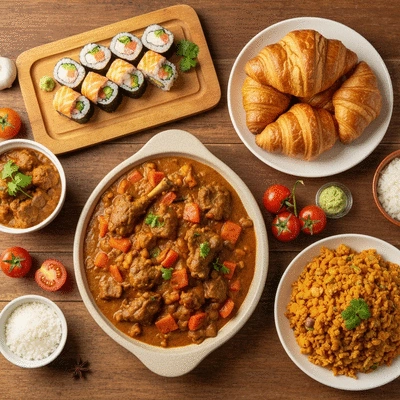
Integrating Modern Techniques with Traditional Recipes
As we strive to preserve culinary traditions, we can also explore innovative ways to keep them alive through modern techniques. It's about creating a dialogue between the past and the present. At Born Foodie, I love to experiment with blending techniques while maintaining the authenticity of cherished recipes.
By understanding how to balance tradition and innovation, we can breathe new life into our culinary practices and ensure that the stories behind our food continue to thrive.
Balancing Tradition and Innovation in Cooking
Modern culinary techniques can enhance traditional recipes, making them more accessible and enjoyable for today’s food lovers. Here’s how we can find that balance:
- Experimentation: Feel free to try new cooking methods that complement traditional ones, such as sous-vide or air frying.
- Ingredient Substitutions: Use contemporary ingredients that maintain the essence of the dish while adding a twist.
- Presentation: Enhance the visual appeal of dishes to match modern dining aesthetics without losing their cultural roots.
By thoughtfully integrating modern techniques, we can create dishes that honor their heritage while appealing to contemporary tastes.
Using Technology to Preserve and Revive Regional Foods
Technology plays a vital role in preserving culinary heritage. Digital archives, AI applications, and modern cooking tools provide us with opportunities to document and revive traditional foods. Here are some ways technology is helping:
- Digital Archives: Online platforms that collect recipes and cultural stories ensure that they are not forgotten.
- AI Applications: These can analyze trends and help culinary enthusiasts recreate forgotten dishes.
- Cooking Tools: Gadgets that simplify traditional cooking methods can encourage more people to engage in culinary arts.
By embracing these technologies, we can safeguard and promote the culinary traditions that make our food culture so rich and diverse.
Understanding the Slow Food Movement and Its Impact
The Slow Food movement emphasizes the importance of sustainable and local ingredients while encouraging a deeper connection to our food. It’s about taking the time to appreciate the culinary process and understand where our food comes from. Here are some principles of the Slow Food movement:
- Sustainability: Prioritizing environmentally friendly farming practices.
- Local Sourcing: Supporting local farmers and producers to keep traditional foods alive.
- Quality over Quantity: Focusing on high-quality ingredients rather than mass-produced options.
At Born Foodie, I encourage everyone to embrace these principles. Doing so not only enhances our meals but also supports a more sustainable food system.
Pro Tip
Did you know? Embracing local culinary traditions can significantly enhance your cooking experience. Try sourcing your ingredients from local farmers' markets to not only support your community but also to discover unique flavors that reflect your region's heritage. Incorporating these ingredients into traditional recipes can create a delightful fusion of past and present!
Future Prospects for Culinary Heritage and Modern Cooking
As we look ahead, the relationship between culinary heritage and modern cooking practices becomes increasingly vital. Integrating sustainable practices into traditional methods not only honors the past but also paves the way for a more responsible future. Imagine enjoying a meal that not only tastes good but also contributes positively to our planet! By embracing sustainability, we can ensure that the stories behind our favorite dishes continue to be told for generations to come. For those interested in rediscovering forgotten culinary practices, explore rediscovering lost culinary traditions.
Incorporating sustainability into our cooking is about more than just ingredients; it’s about a mindset. Traditional methods, such as foraging, fermentation, and heirloom gardening, align beautifully with modern goals of environmental stewardship. This connection fosters a culinary landscape where flavors thrive alongside our commitment to preserving the earth.
The Role of Sustainable Practices in Food Tradition Preservation
- Utilizing local and seasonal ingredients to reduce carbon footprints
- Supporting small-scale farmers who practice ethical farming methods
- Reviving ancient preservation techniques that minimize waste
By choosing to source ingredients locally, we not only support our communities but also rediscover the flavors that define our regional cuisines. As part of my journey at Born Foodie, I’ve seen firsthand the magic that happens when we prioritize sustainability. Traditional cooking methods can teach us so much about the ingredients we use and the impact they have on our world.
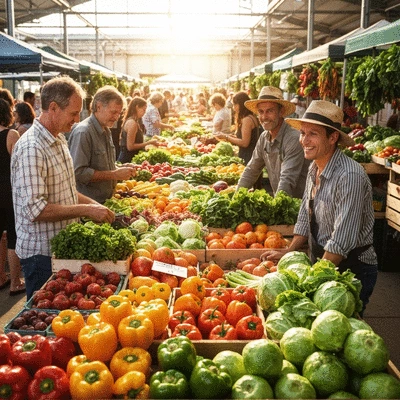
Encouraging a New Generation of Cooks
We can’t talk about the future of culinary heritage without mentioning the importance of education. Engaging young cooks through hands-on experiences can ignite a passion for preserving traditions. By incorporating culinary history into cooking classes, we can inspire the next generation to appreciate the stories behind each dish they prepare.
Creating a sense of community around food is vital. When young chefs connect with their roots, they often find a renewed sense of purpose in their culinary pursuits. This passion fuels creativity and innovation, allowing them to blend traditional techniques with modern flair.
Culinary Tourism: Exploring Flavors and Traditions
- Participating in food festivals that celebrate local cuisine
- Traveling to regions known for their unique culinary traditions
- Supporting local artisans and markets that showcase regional specialties
Culinary tourism isn’t just about tasting delicious food; it’s about immersing ourselves in the stories and cultures that shape our dishes. Visiting local markets or attending food festivals opens our eyes to the rich tapestry of traditions that exist worldwide. At Born Foodie, I encourage everyone to embark on their own culinary adventures, learning from the locals who carry these traditions forward.
Call to Action: Get Involved in Culinary Heritage Preservation
Now that we've explored the future prospects for culinary heritage, it’s time for you to take action! There are many ways to get involved in reviving local food traditions, and every little effort helps preserve the rich tapestry of our culinary history.
Ways to Participate in Reviving Local Food Traditions
- Explore local culinary events in your community
- Join cooking classes that focus on traditional recipes and techniques
- Support local farmers by purchasing their produce and products
Imagine the joy of discovering your local food scene! Participating in community events not only fosters connection but also strengthens the appreciation for what makes your region unique. I find that engaging with fellow food lovers often leads to shared stories and experiences that enrich our understanding of culinary heritage.
Start Your Own Culinary Heritage Journey
Ready to dive into your own culinary adventure? I encourage you to start exploring traditional recipes and techniques at home. Begin by picking a dish that resonates with you—maybe a family recipe or a regional favorite. Document your journey and share your experiences with the community! Every story adds depth to our collective narrative.
Join Community Cooking Classes and Workshops
Attending cooking classes that focus on traditional and sustainable practices is a fantastic way to connect with local cultures. Not only will you learn valuable skills, but you’ll also meet like-minded individuals who share your passion for food. As you engage with others, your culinary journey will become a rich tapestry of shared knowledge and experiences.
At Born Foodie, we believe that every meal can tell a story, and it’s time for us to make our voices heard. Let’s work together to preserve the culinary heritage that connects us all! What will your culinary story be?
Frequently Asked Questions (FAQs)
Q: What is culinary heritage?
A: Culinary heritage encompasses more than just recipes; it includes the cultural significance, identity, stories, and traditions associated with regional cuisines that have been passed down through generations.
Q: Why is it important to preserve culinary heritage?
A: Preserving culinary heritage is vital because it maintains cultural identity, fosters a sense of belonging, promotes cultural exchange, enriches culinary experiences with diverse flavors, and ensures that traditional culinary knowledge is passed down.
Q: What are the main challenges threatening culinary heritage today?
A: Key challenges include industrialization (leading to homogenized flavors), fast food culture (prioritizing convenience over tradition), skill loss among younger generations, and globalization (which can overshadow local food traditions).
Q: How can modern techniques help preserve traditional recipes?
A: Modern techniques can enhance traditional recipes by making them more accessible and enjoyable. This can involve experimenting with new cooking methods (like sous-vide), using contemporary ingredient substitutions, and updating presentation while maintaining the dish's cultural essence.
Q: What role does technology play in preserving culinary traditions?
A: Technology plays a crucial role through digital archives (to document recipes and stories), AI applications (to analyze trends and recreate forgotten dishes), and modern cooking tools (to simplify traditional methods and encourage engagement).
Q: What is the Slow Food movement and how does it impact culinary heritage?
A: The Slow Food movement emphasizes sustainability, local sourcing, and quality over quantity. It encourages a deeper connection to food by prioritizing environmentally friendly practices, supporting local farmers, and appreciating the culinary process, thereby helping to preserve traditional foodways.
Q: How can individuals get involved in preserving local food traditions?
A: Individuals can get involved by exploring local culinary events, joining cooking classes focused on traditional recipes, supporting local farmers and producers, starting their own culinary heritage journey by cooking traditional dishes at home, and engaging in culinary tourism.
Recap of Key Points
Here is a quick recap of the important points discussed in the article:
- Preserving Culinary Heritage: Understanding the cultural significance of regional cuisines is vital for maintaining our culinary identity.
- Challenges: Industrialization, fast food culture, and skill loss threaten traditional culinary practices.
- Modern Techniques: Integrating contemporary cooking methods with traditional recipes can revive and celebrate culinary heritage.
- Technology's Role: Digital archives and AI can help preserve and document culinary traditions effectively.
- Encouraging Education: Engaging young cooks with hands-on experiences fosters a passion for preserving food traditions.
- Culinary Tourism: Exploring local cuisines through travel and participation in food festivals deepens our appreciation for culinary arts.
